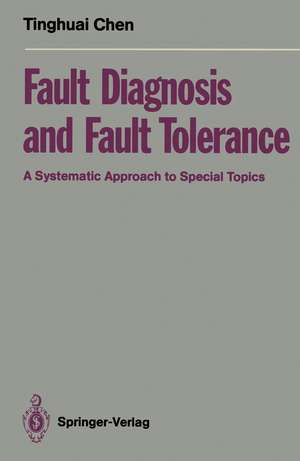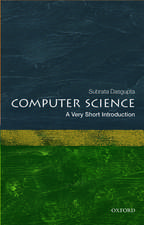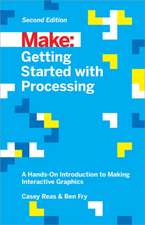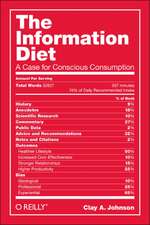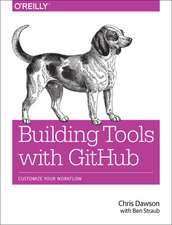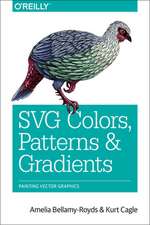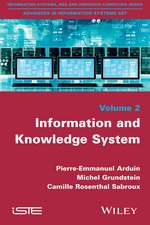Fault Diagnosis and Fault Tolerance: A Systematic Approach to Special Topics
Autor Tinghuai Chenen Limba Engleză Paperback – 25 feb 1992
Preț: 643.50 lei
Preț vechi: 804.37 lei
-20% Nou
Puncte Express: 965
Preț estimativ în valută:
123.15€ • 128.09$ • 101.67£
123.15€ • 128.09$ • 101.67£
Carte tipărită la comandă
Livrare economică 14-28 aprilie
Preluare comenzi: 021 569.72.76
Specificații
ISBN-13: 9783540549628
ISBN-10: 3540549625
Pagini: 212
Ilustrații: XII, 197 p. 6 illus.
Dimensiuni: 170 x 242 x 11 mm
Greutate: 0.36 kg
Ediția:Softcover reprint of the original 1st ed. 1992
Editura: Springer Berlin, Heidelberg
Colecția Springer
Locul publicării:Berlin, Heidelberg, Germany
ISBN-10: 3540549625
Pagini: 212
Ilustrații: XII, 197 p. 6 illus.
Dimensiuni: 170 x 242 x 11 mm
Greutate: 0.36 kg
Ediția:Softcover reprint of the original 1st ed. 1992
Editura: Springer Berlin, Heidelberg
Colecția Springer
Locul publicării:Berlin, Heidelberg, Germany
Public țintă
ResearchCuprins
1 Four-Valued Logic and Its Applications.- 1.1 Introduction.- 1.2 Mathematical Basis.- 1.3 STAR Expansions, Boolean Difference and Boolean Differential.- 1.4 Combined Components.- 1.5 Boolean Equations.- 1.6 Test Generation for Combinational Circuits.- 1.7 Statical Test Generation for Sequential Circuits.- 1.8 Identification of Hazards and Dynamic Testing.- 1.9 Transition Logic.- 1.10 Comparison with Other Logics.- References.- 2 Computer System Diagnosis and Society Diagnosis.- 2.1 Introduction (PMC Model).- 2.2 One Step System Diagnosis for PMC Model.- 2.3 The Extension of System Diagnosis.- 2.4 The Application of System Diagnosis.- References.- 3 Testability Design via Testability Measures.- 3.1 Introduction.- 3.2 Testability Design.- 3.3 Design for Testability at Module Level.- 3.4 Applications.- References.- 4 NMRC: A Technique for Redundancy.- 4.1 Introduction.- 4.2 NMRC System Model.- 4.3 Analysis of Fault Tolerance Capability.- 4.4 Optimal NMRC System Design.- 4.5 An Example for Comparison Analysis.- 4.6 Conclusion.- References.- 4.A.1 The Proof of Theorem 4.4.- 4.A.2 The Proof of Lemma 2.- 5 Fault Tolerance of Switching Interconnection ß-Networks.- 5.1 Introduction.- 5.2 General Inequalities.- 5.3 ISE-MISE-RMISE.- 5.4 C 1n,t ß-networks.- 5.5 RFT Network.- 5.6 Conclusion.- References.- 6 The Connectivity of Hypergraph and the Design of Fault Tolerant Multibus Systems.- 6.1 Introduction.- 6.2 Connectivity of Hypergraph.- 6.3 BIB Design and the Optimized Multibus System.- 6.4 WBIB and the Optimized Multibus System.- 6.4.4 WBIB Design for ?=3.- 6.5 Generation of WBIB to Other Networks.- 6.6 Conclusion.- References.- Appendix: The Proof of Theorem 6.6.- 7 TMR Design of Distributed System for Sequential Faults.- 7.1 Introduction.- 7.2 DFT Concept.- 7.3 The FaultTolerance Degree.- 7.4 The Relationship Between the Architecture and the Fault Tolerance Degree.- 7.5 Optimal Design.- 7.6 Conclusion.- References.
